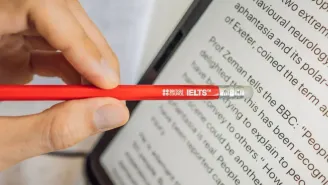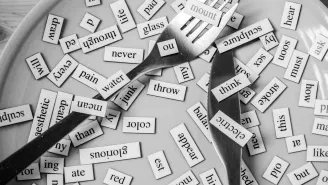The Flavour Of Pleasure Reading Answers Passage
The Flavour Of Pleasure Reading Answers Passage
Paragraph 1. In order to really appreciate a flavour, our mouth, tongue, and nose must all work together, regardless of how much we chat about how much we love our favourite flavours. Most people pay scrutiny to the way food tastes, feels, and looks, but scientists term this “retronasal smell,” a little burst of the air we get as we’re chewing it.
Paragraph 2. Assuredly, taste buds are positioned in our mouths and tongues, where the five primary taste receptors can be found: sweet, salty, sour, bitter and savour, which is mostly specified as umami. However, we’ve noticed certain irregularities in our taste buds when it comes to food. For quick identification of toxins, which are frequently bitter or acidic in nature, they developed only a few basic tastes.
Paragraph 3. Everything about flavour’s depth, refinement, and gratification is dependent on the nose’s secondary sense of smell. When we inhale and exhale the aromas of our meal, a type of alchemy takes place. Unlike the hound’s skull, which developed expressly to detect exterior odours, human nostrils evolved to sense interior odours. Primates are experts at savouring the millions of flavour combinations that they can concoct for their tongues.
Paragraph 4. Recognising flavours lacking retronasal scent is difficult. Recently, headed by Yale University’s Gordon Shepherd, neuroscience has begun to shed light on the workings of the sense of smell, which has been the least known of the five. Shepherd coined the term ‘neurogastronomy’ to connect the discipline of food science, neurology, psychology, and anthropology with the savoury aspects of eating, one of the most cherished human experiences.
Paragraph 5. In many respects, he is realising that smelling is akin to recognising faces. Patterns of light and dark are detected by the visual system, and the brain builds a spatial map based on previous experiences. People and locations can be identified by analysing the patterns and drawing inferences based on their interrelationships. Patterns and ratios help us distinguish between new and old tastes in the same manner. The air molecules in our food are detected by specialised receptors at the back of the nose when we chew. The brain interprets odours as complicated spatial patterns based on data received from the receptors. It develops the concept of distinct flavours using these as well as information from the other senses.
Paragraph 6. This ability to enjoy certain fragrances turns out to be fundamental to the pleasure we derive from eating, similar to how our ability to distinguish persons is fundamental to the pleasures of social life. The process is so deeply ingrained in our brains that our sense of smell is essential to our overall enjoyment of life. Recent studies show that people who lose their social anxiety and their general sense of well-being take a nosedive.
Paragraph 7. Food scientists, psychologists, and cooks remarkably similar are interested in discovering the function of scent in flavour. Particularly, the relatively new field of molecular gastronomy focuses on knowing the mechanics of fragrance in order to alter flavour for optimal effect. In this field, chefs employ their knowledge of the chemical reactions that occur during cooking to create “extraordinary” culinary delights.
Paragraph 8. However, while molecular gastronomy is mostly interested in the molecules of the food or “smell,” neurogastronomy is more interested in the molecules of the receptors and the brain’s spatial image of the smell. Shepherd calls the memories we remember when we smell them “odour objects,” and this has a direct link to how we feel. The brain makes pictures of smells it doesn’t know by comparing them to smells it does know. Back in the day, when visual clues were few and far between, we turned to our ability to smell to help us identify potential prey, much like most animals do today.
Paragraph 9. Thus, the flavour-recognition system of the brain is a very complicated perceptual process that engages all five senses in varied combinations. Visual and auditory clues, such as crunching, and tactile sensations, such as the texture and feel of food on our lips and in our mouths, all play a role. Inhalation activates the taste receptors, followed by the olfactory receptors. Imagining some of the diverse facial expressions evoked by various cuisines – many of which are hardwired into our brains from birth – is a simple way to convey the emotional engagement of humans. Consider the reaction to the acidity of the lemon and compare it to the face that welcomes the smooth marvel of chocolate.
Paragraph 10. The flavour-sensing system, receptive to new combinations, helps us to keep our brains active and flexible. In addition to this, it can mould our aspirations and, eventually, our bodies. The potential for neuro-gastronomy to have a positive impact in the form of beneficial applications, such as the manipulation of flavour to control appetites, is on the horizon.
Also Read: IELTS Reading Tips & Tricks 2024: Techniques for Band 9
The Flavour Of Pleasure Reading Answers with Sample Questions
Have you read the passage? Now, take the test and find The Flavour Of Pleasure Reading answers! Try to answer these questions by yourself before you sneak a peek at the answers given below.
Check Out Top 15 IELTS Reading Practice Test Questions with Answers
Below are some top free IELTS Reading Practice test online questions with detailed answers to enhance your IELTS preparation online. We have provided sample passages for each test type for your reference.
- What Is Exploration Reading Answers
- Effects Of Noise Reading Answers
- The Discovery Of Baby Mammoth Reading Answers
- The Dead Sea Scrolls Reading Answers
- The Ring-Tailed Lemur Reading Answers
- Why We Need To Protect Polar Bears Reading Answers
- Nutmeg A Valuable Spice Reading Answers
- What Is Meaning Reading Answers
- Cutty Sark Reading Answers
- The Step Pyramid Of Djoser Reading Answers
- South Pole Adventurer Reading Answers
- The Future Of Work Reading Answers
- Ambergris Reading Answers
- Trees In Trouble Reading Answers
- Could Urban Engineers Learn From Dance Reading Answers






